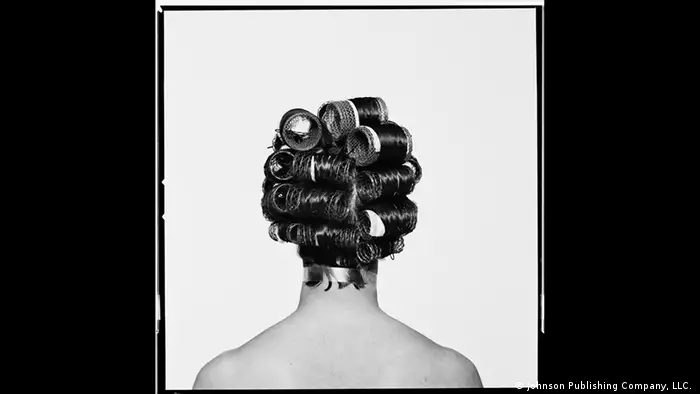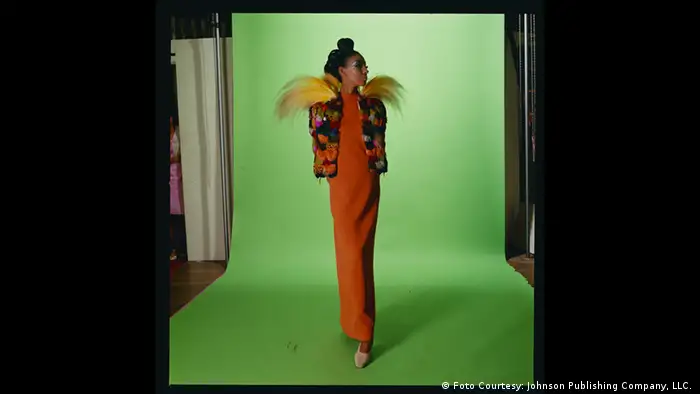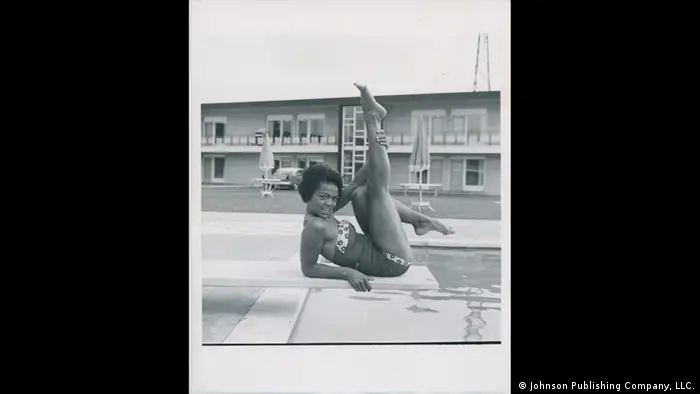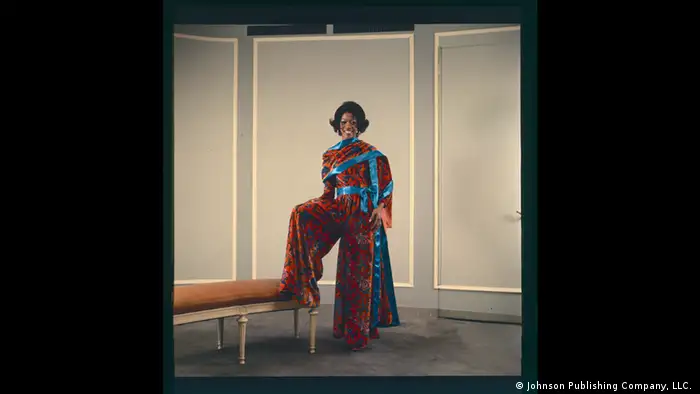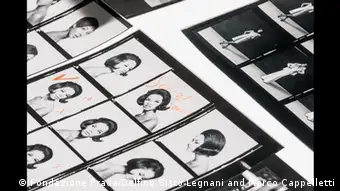Arts
African-American fashion magazine 'Ebony' photos on show in Berlin
US magazines "Ebony" and "Jet" have influenced generations of black Americans. Former president Barack Obama is no exception. An exhibition in Berlin shows treasures from the archive of the magazine's publisher.
Barack Obama gave a very personal interview to the American magazine Ebony before and after his election as US president. He recalled, among other things, the importance of the magazine for his own career: "When I grew up, the only black men on television were criminals or Flip Wilson, dressed as a character named Geraldine," he said.
Ebony is published by the Johnson Publishing Company, which was founded in Chicago in 1942 by John H. Johnson. The magazine is an integral part of African-American history as Johnson's aim was to boost the confidence of black Americans. As Ebony reports on its website, its mission is to publish "positive images" of African-Americans from "Harlem to Hollywood."
Ebony has profoundly impacted Afro-American culture
The first issue of Ebony appeared in autumn 1945, with the sister magazine Jet following in 1951. The two magazines presented African American doctors, lawyers, businessmen and black celebrities for the first time — in the format and layout of a glossy magazine. This was at a time when such publications were normally reserved for white, blonde men and women. Publisher Johnson deliberately targeted an African-American audience that would participate in the post-war economic boom.
Publishing icon John H. Johnson died in 2005 at the age of 87, six decades after Ebony first appeared. However, he remained in the minds and hearts of many Americans. Several civil rights movement leaders attended his funeral, as did former US president Bill Clinton.
Archive photos on show
Now, in an exhibition in Berlin's Gropius Bau museum, visitors can view photographs from the Johnson Publishing Company's archive.
As guest curator, Afro-American conceptual artist Theaster Gates selected works by photographers Moneta Sleet Jr. and Isaac Sutton for the show.
"For this show, I hope to tease out the creation of female iconic moments by Sleet and Sutton and also offer small forays into the lives of everyday people through never-before-seen images from the Johnson Collection," said Gates. "The archives speak about beauty and black female power. Today it seems to me a good time to dig into the visual lexicon of the American book and show images that are rarely seen outside of my community."
The long-time Ebony photographer Moneta Sleet, who died in 1996, made history with his photos -— and he captured it in pictures as well. Significantly, he was also often at the side of Martin Luther King. From 1955 onward, Sleet photographed civil rights leader King, such as in 1964 when he accepted the Nobel Peace Prize and in 1965, when he led the protest march of the civil rights movement from Selma to Montgomery.
Front and center: Moneta Sleet Jr. and Isaac Sutton
Sleet also photographed the funeral of Martin Luther King on April 9, 1968. Five days earlier, a sniper bullet had killed the civil rights leader. However, to be accepted among the official photographers, King's widow, Coretta Scott King, had to stand up for Sleet.
When she discovered that the press pool accompanying her husband's funeral did not contain a single black photographer, she threatened: If Sleet was not allowed into the church, there would be no admission at all for the photographers, period.
Sleet's photo of Mrs. King and her tear-drenched daughter Bernice appeared in the May 1968 issue of Ebony. Sleet won the prestigious Pulitzer Prize, making him the first African-American photographer ever to receive this prestigious journalism award.
Plenty on show
In addition to Sleet's photographic work, the exhibition also shows photos by Isaac Sutton — a photographer who was equally influential in Ebony's presentation and reach.
Meanwhile, the Johnson Publishing Company has had to file for bankruptcy and is up for sale. So it's all the more significant that a selection of the four million photographs in total is on display in Berlin. In addition to original editions of Ebony and Jet, viewers can enjoy 10 large-format prints by Sleet and Sutton, as well as more than 100 other photos.
Visitors are also encouraged to put on white gloves and browse through the portfolios that are laid out.
The exhibition "The Black Image Corporation" is on show the Martin-Gropius-Bau in Berlin through July 28, 2019.
DW recommends
- Date 30.04.2019
- Author Sabine Oelze (als)
- Keywords Ebony, Jet, John H. Johnson, Theaster Gates, photography, Afro American
- Feedback: Send us your feedback.
- Print Print this page
- Permalink https://p.dw.com/p/3HhEt
- Date 30.04.2019
- Author Sabine Oelze (als)
- Keywords Ebony, Jet, John H. Johnson, Theaster Gates, photography, Afro American
- Send us your feedback.
- Print Print this page
- Permalink https://p.dw.com/p/3HhEt

